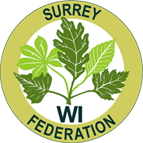CAMPAIGNS
Each year the NFWI adopts one or two resolutions put forward by members. This gives every member of the WI the opportunity to bring a subject about which they are concerned to national attention.
The first step is for members, with the support of their WI, to send their ideas for resolutions to their local federations. Surrey Federation usually asks for submissions at the start of July so that they can be edited and fine-tuned before being formally submitted to NFWI.
A group of representatives from around the country then discuss the resolutions and create a shortlist of five or six that are specific in their wording, have achievable goals, and are in line with the aims and ethos of the WI.
In January, each WI member selects their favourite from the shortlist. The number of individual votes each resolution gets is recorded and the most popular one or two are then put to WIs for the final vote in April or May. This time each member has a straight vote for or against the resolution(s). If there is more than one, they can vote for or against one or both. It is this vote which decides which resolution(s) will be put to the National Federation’s annual meeting, held in June.
WIs then have to decide whether to give the delegate who will represent them at the annual meeting discretion, which means she can change her vote based on arguments for or against the resolution(s) put forward at the meeting, enabling her to make a more informed decision. In 2021 there were 66,312 individual selections cast by WI members and the most popular resolution, which received 30,240 selections, was A call to increase awareness of the subtle signs of ovarian cancer. The NFWI Board of Trustees decided to put this resolution forward to the Annual Meeting in June 2021. Further information, including resources, can be found on the NFWI website.
If more than one resolution is presented to the annual meeting, both can be passed, neither can be passed, or one can be passed. Once a resolution has been adopted, WI members have a mandate to campaign on that issue.
Although the process is rather long, it tries to ensure that there is a clear vision on how the WI can campaign on resolutions locally and nationally.


